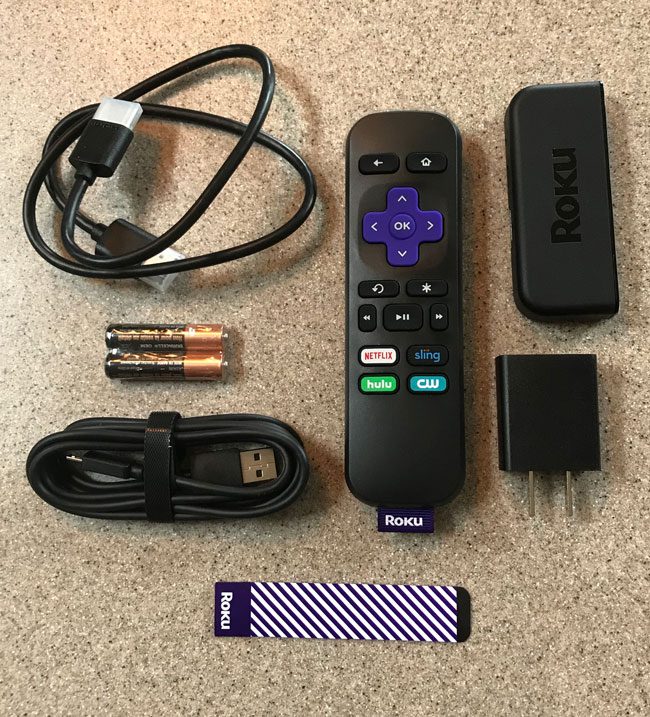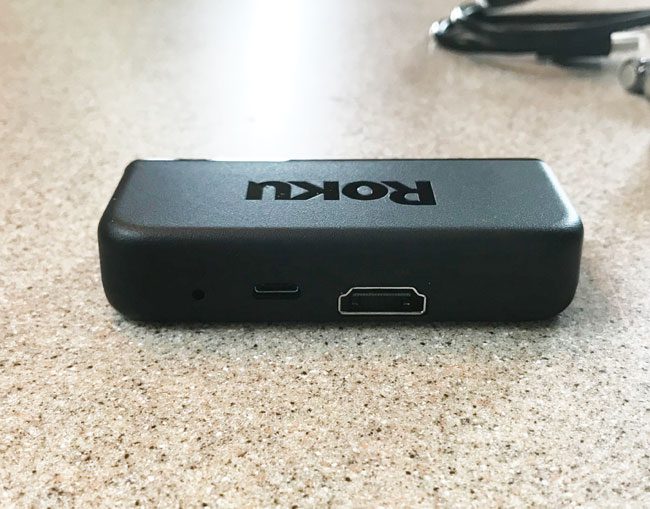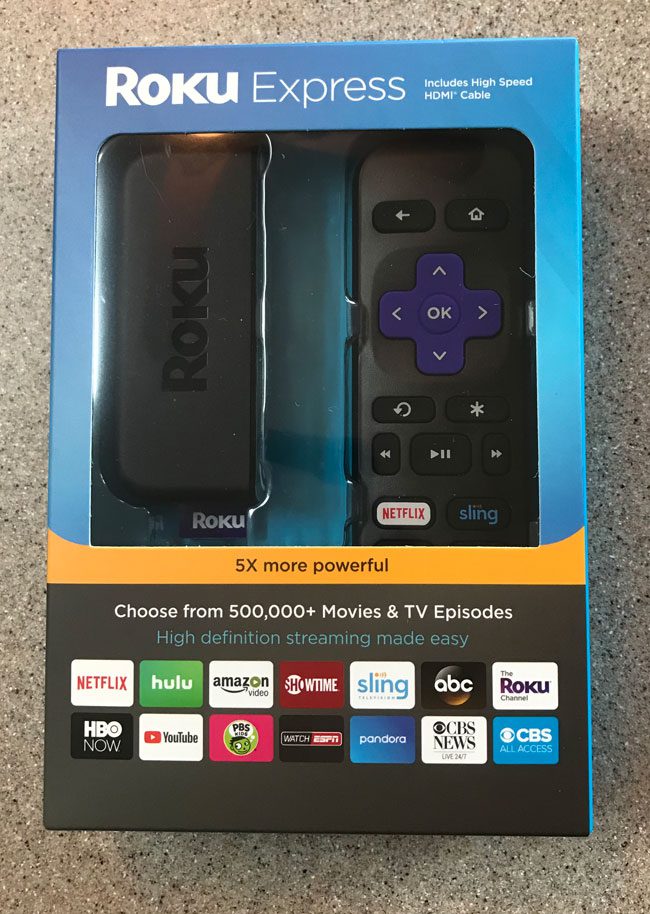If you have the Prime Video app and want to change accounts, then you can read this guide on how to sign out of Prime Video on Roku.
First Impressions
HDMI cableBatteriesPower cordRoku remoteRoku ExpressPower plugAdhesive strips
On the back of the Roku Express are two ports and a Reset button. The two ports are a mini-USB port and an HDMI port. The mini-USB port is what you use to connect the power cable. The USB port lets you connect the Roku Express’ power cable, and the HDMI cable lets you connect the device to your TV. If your TV has a USB port, you may be able to connect the USB cable to that port to give the device power.
Ease of Setup
Before you are ready to use your Roku Express, make sure that you have a television with an HDMI port to which you will be connecting the Roku Express, and that you know the name of your wireless network and the password for it. Setup of the Roku Express is fairly straightforward. Simply decide where you want to put the Roku Express, connect your HDMI cable to the HDMI port on the back of the device, then connect the other end to an HDMI port on your TV. Next connect the USB cable to the USB port on the back of the Roku Express, then plug it in. That’s it. Now you can turn on your TV and switch to the input channel to which you connected your Roku, then proceed with the instructions on the TV to complete the setup.
Speed
The Roku Express has become a pretty fast device, certainly an improvement over the performance of the previous entry-level Roku device models. Previously I had recommended that people get one of the more expensive models if speed and performance were a factor, but I find that the performance of the Express is more than suitable for most use cases. The amount of time it takes the Roku Express to boot up from being turned off until it is in a usable state is very short. Moving around the menu is instantaneous, and the Express responds to button presses immediately, with most channels launching in a matter of seconds. Videos also start playing within a second or two of selecting them, although this timing is going to be based more on your Internet connection than anything else.
Network Connectivity
The Roku Express requires a wireless network, as there is no ethernet port on the device. Additionally, unlike other Roku models like the Roku Streaming Stick+, the Roku Express does not include the advanced wireless receiver. However, provided that your Roku Express is going to be in a location that is relatively close to your wireless router, and you have other nearby devices that are able to connect to your wireless network, it’s unlikely that you will experience an issue. But if you are planning to put the Roku Express in a room or location that may not have a strong wireless signal, then you may have a better experience with the Roku Streaming Stick+.
Comparison with Other Rokus
When considering the Roku Express in relation to the other Roku models, it’s important to remember that this is the base model of the device. This means that many of the features that you would find on more expensive models, such as 4K or HDR streaming, are not found on the Roku Express. However, the Roku Express is able to stream in 1080p, you can use the Roku app on your smartphone to control the device, and it has full access to the full Roku catalog. When you are considering getting a device for your home, it’s important to look at other similar products that you might enjoy more. The Fire TV Stick is also slightly more expensive than the Roku Express, although the remote on the Fire TV Stick does have a voice control function, which may be important to some people. My personal preference between these two devices would be the Roku Express. I find the navigation to be simpler, though this could certainly be chalked up to personal bias, as I’ve been using Rokus for a very long time.
Conclusion
It’s affordable, easy to set up and use, and has access to a massive selection of different channels. After receiving his Bachelor’s and Master’s degrees in Computer Science he spent several years working in IT management for small businesses. However, he now works full time writing content online and creating websites. His main writing topics include iPhones, Microsoft Office, Google Apps, Android, and Photoshop, but he has also written about many other tech topics as well. Read his full bio here.
You may opt out at any time. Read our Privacy Policy



